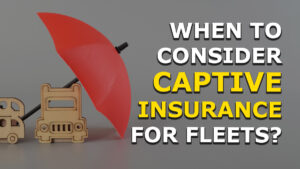
When companies are acquired, getting a new DOT number is going to increase insurance rates because there is naturally higher insurance for a new entrant who has no safety history associated to the DOT number.
Carriers or drivers dropping a bad DOT Number for a new clean record are called “chameleon carriers” because they try to blend into new surroundings, hiding themselves from their past negative record.
Chameleon carriers are bad for the trucking industry because many are unsafe operators who disregard hours of service compliance, vehicle or truck maintenance, and/or customer service. There are companies who sometimes use cardboard signs to quickly swap their DOT number and company name while on the road to prevent roadside enforcement.
Questions about multiple DOT numbers come up because there is safety history and experience associated to the DOT number, which lowers insurance rates if the history is good.
When companies are acquired, getting a new DOT number is going to increase insurance rates because there is naturally higher insurance for a new entrant who has no safety history associated to the DOT number.
According to a recent Transport Topics article, “the rise in acquisitions ultimately is good since it gives small fleet owners a way out besides bankruptcy and puts their business in a position to scale up with another company.” This trend is likely to continue given the rise in insurance costs.
However, understanding what happens to DOT numbers during an acquisition or merger is important.
USDOT numbers are not transferable but operating authorities, or MC numbers, are transferable. This is because USDOT numbers are a unique identifier to track the safety history of a specific carrier. Transferring a USDOT number would have the effect of transferring the entire safety history of one entity to another separate entity.
When is it legal to have more two or more DOT numbers?
Not all carriers with multiple DOT numbers are doing so illegally.
According to Adam Galante, a DOT compliance expert at Compliance Navigation Specialists, “What drives people to have multiple DOT numbers are the insurance rates, which are determined by their hauling classification. We see it a lot with farmers who do follow regulations, but haul different items and fall under multiple classifications.”
“A fertilizer hauler contacted us to get another DOT number and instantly we are trained to think they are a chameleon carrier, but that is not the case. He can have different entities, but he has to keep the equipment separate. It’s when you start sharing equipment that things can get ugly, unless there is a proper lease agreement to share it.”
“For instance, the fertilizer hauler may want two DOT numbers. One for when he picks up fertilizer for his farm operation and another for picking up and delivering fertilizer to other distributors. So, if he is picking it up for his own farm use as well as delivering to other distributors needing fertilizer, he would need to separate the entities because they would own a private property farm as one entity and a commercial operation as another entity. This is significant because a farm and a commercial operation wouldn’t operate the same and insurance rates would be different as well.”
The FMCSA’s policy is to assign a unique USDOT identification number to each person required to identify themself with FMCSA and remain assigned to that person forever under 49 U.S.C. 13902, 31134 and 49 C.F.R. 390.19T or 390.200T.
According to the DOT, “a person includes an individual, corporation, partnership, or other business organization as authorized by state law. Each separate and distinct person must have separate registration.”
For corporations, partnerships, and other business organizations, the USDOT number will remain the same when there is a change in company officials, address or other demographic information, and the corporation, partnership, or other business organization will continue operations as the same legal person/entity.
The only time a company will need multiple DOT numbers is if they operate two or more separate commercial driving entities.
In other words, the company needs to have separate entities but have familial ownership.
Many others choose the route of having a single DOT number parent company where the parent company has the DOT number, appropriate insurance, and all subsidiaries are listed as per insurance regulations. They have corporate leases between the parent company and subsidiaries that cover the ownership of the equipment, addressing company vehicles only, not owner-operators.
Everything they have runs under the parent company regardless of which entity the equipment is registered to.
Whether you choose to get one or two DOT numbers, you do need to follow proper procedures so that you can operate your vehicle legally.
For more information, contact CNS at 888.260.9448 or info@cnsprotects.com.





